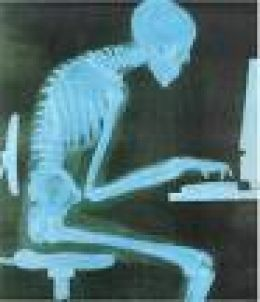
Source: back2basics.hubpages.com
New article on: (a) why install Evernote’s web clipper and (b) how to install Evernote’s Web Clipper … in Google Chrome on the RestartGTD howto pages.
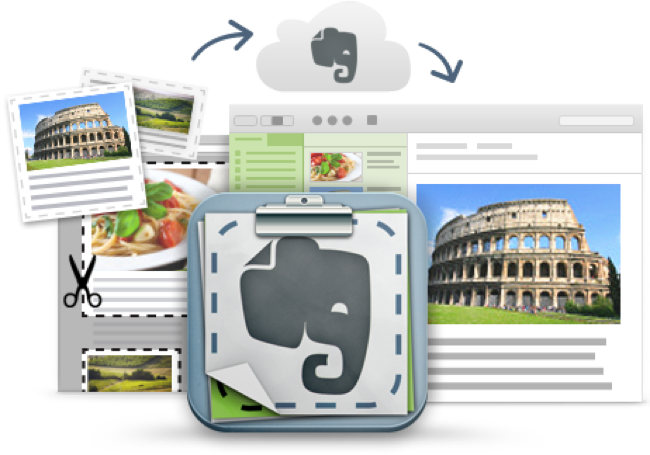
Source: Evernote.com


Source: back2basics.hubpages.com
New article on: (a) why install Evernote’s web clipper and (b) how to install Evernote’s Web Clipper … in Google Chrome on the RestartGTD howto pages.

Source: Evernote.com

Source: Purchased from ShutterStock.com
FYI, I just added a static page on How Tos, where the first how to is on scanning business cards. This page includes a link to a home made restartgtd.com YouTube video of the business cards moving through the ScanSnap scanner. In my Getting (re)started with GTD classes, when the students see how fast the duplex scanning operates, they immediately flip the mental bit related to being able to catch up with paper. If paper (or business cards have you down) you may want to check out the video.
Resistance is futile, you need to buy a Fujitsu ScanSnap scanner to get paper assimilated!
bill meade
Source: Office Design Gallery
A little more snooping around the internet has produced the polar opposite of “No money down GTD.” These are real offices that are tricked out in spare no expense creativity.
The idea I like the best is the IL CONTE OFFICE (scroll to the bottom of Office Design Gallery’s web page). Why?
In economics a distinction is made between “search goods” and “experience goods“. Search goods are products or services that you can observe characteristics that you need before purchase. For example, medicines. You know the milligrams of each medicine you need, so you can buy a generic that is equivalent to a prescription drug.
At the other extreme are experience goods where the characteristics of value are difficult or impossible to observe before purchase. Experience goods split wants from needs. Especially in new technology areas, at first people can only tell you what they want, not what they need. After people go over the learning curve with a new product category, they can articulate what they need. But, not until.
Example experience good: Jamba Juice.
One day while my wife and I were in Jamba Juice and Beth was in front of me in line to order. She was taking a long time deciding what fruit-mulch drink to choose. I heard myself say “Honey, these are experience goods, you can’t compute the best one to choose. Just start at the upper left hand corner and work you way down each time you come!” Beth was not offended, and we still enjoy discussing how to choose experience goods, from the top left or bottom right of the list.
So what?
Offices are experience goods. Desks are experience goods. GTD is an experience good. Each GTD sub-component is an experience good. You have to try each of these, try satisfying a want, in order to gather the information on what your true needs are. Wants are stepping stones to needs.
Economics also talks about “credence goods” where it is difficult for consumers to ascertain the impact of the good. Lawyers, doctors, dentists, etc. all tend to be credence goods.
I don’t think so. Since starting GTD I’ve *felt* my productivity increase, then plateau as I figure out how to plug leaks in my system, and then rise once the leaks are plugged. After the initial rise-plateau-rise pattern, I’ve plateaued as I experimented by swapping out components (Evernote for paper reference filing).
I’ve also felt my level of stress reduce. Of course what I did with that was to take on more work so that my level of stress rose back up to historic levels. But at least I was getting a bunch more done for the stress!
Here are the tiny-poll results to date on the ways GTD improves productivity for other restartGTDers:
Enjoy!
bill meade
I stumbled into a great apartmenttherapy.com article from 2008 that was looking back at desks designed in 1996. All these designs and designers are new to me. They form a kind of traveling desk zoo for the enjoyment of restartgtd.com folk.
Source: apartmenttherapy.com
This sports fans, is a 35 meter desk! A single desk! Now THAT is space to spread out into! Called the “carte blanche love table” by designer Edouard François
Source: en.bulo.com
Source: en.bulo.com
Fun Facts:
Carte Blanche Collection High Points:
Source: en.bulo.com
Source: en.bulo.com
Source: en.bulo.com
Source: en.bulo.com
Bulo’s motto is “LOVE YOUR OFFICE” and the above desks were developed around the following theme:
The basic idea behind the Carte Blanche concept, created in 1996, is to invite creative people to express their vision of the ideal workplace, free from any constraints.
Enjoy!
bill meade
Taught my “Getting (re)started with GTD” class last weekend. One student needed to apply GTD without cash out of pocket. So, I’ve been thinking about how to get started with GTD without spending anything.
So, below please find the GTD office available for no money down (but you have to drive to pick everything up, so alas, there are time and gas costs included) available in Portland on 2012/04/25. *Note* the links to Craigslist don’t live long, but they worked when I wrote this post. More important items have the picture that was up with the post.
Step 1: Get a desk. Portland’s Craigslist is a treasure trove of free desk options. For example:
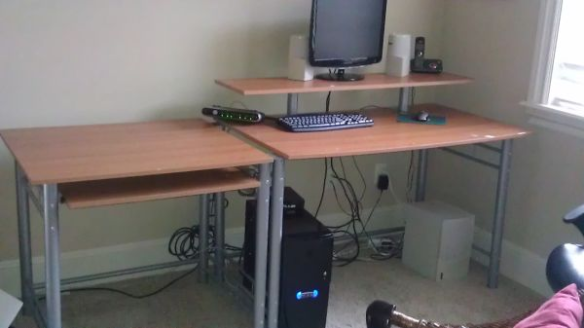
Source: Portland Craigslist Free
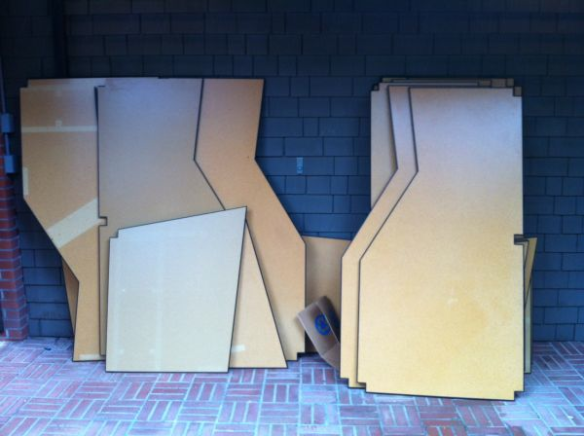
Source: Portland Craigslist Free
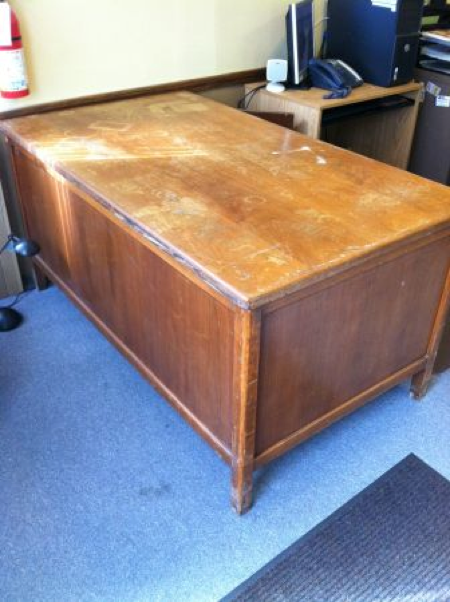
Source: Portland Craigslist Free
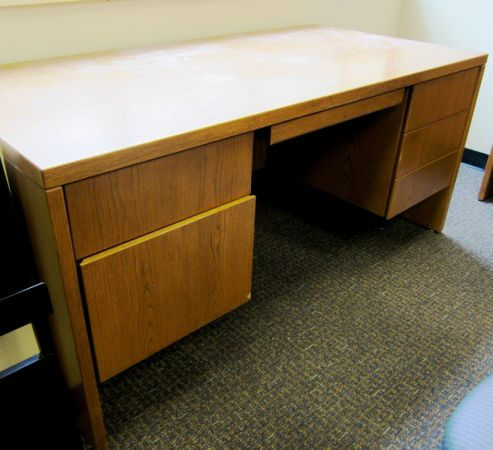
Source: Portland Craigslist Free
Step 2: Get organizing supplies like:
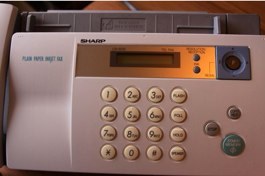
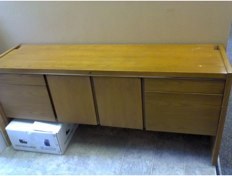

“American Tourister day planner/organizer. 3-ring binder inside. Will hold a full notepad. Still has the calculator and a sharpie type pen inside. Inside pocket is torn on the bottom but is still very usable. Full-outside zipper.”
Just saw a creative inspiring post on apartment therapy. The idea is to use the Asker counter organizer from Ikea.
Source: Apartmenttherapy.com
Ikea Spotting has a similar desk arrangement with tons of Ikea storage tools that get the clutter up above the desk so the workers won’t see the clutter on the desk. This does not hold the laptop up with a dish drainer (Wow!), but you can imagine yourself sitting at this desk and getting things done.
Source: Ikeaspotting.tumblr.com
As I hypothesized in the post on the “good enough” home desk, I think that the surface of the desk being clear is critical to my clear headedness. Not saying that this is for everyone, but it works for me.
I would alter the above two desks by raising the hanging bars 6″ each. That gives you surface to 6″ up that is clutter free. Next, I would get all the device clutter (speakers, iPhone dock, iMac stand) off the desk with either arms or more Asker hangers. No wires. No clutter. No hangups to thinking with your hands on the desk surface.
bill meade
Source: Problogger.net
GTD’s natural planning model (Ch 3) is my silent secret GTD weapon.
While an undergraduate, I was plagued by writer’s block. Then, I discovered Gabriele Rico’s (1985) WRITING THE NATURAL WAY, and the concept of “clustering” (today called mind mapping) …
Source: Gabrielerico.com
… “trial web shift” feeling the time when mind mapping can graduate to writing, became tools for me. Discovering the tools in WRITING THE NATURAL WAY gave me *tingles* of recognition. I could not articulate why they were important, but I immediately knew.
Next, I discovered Betty Edwards’ DRAWING ON THE RIGHT SIDE OF THE BRAIN which is really the drawing analog of WRITING THE NATURAL WAY. Each book broke its domain down into a set of 5 or 6 orthogonal tools, that empowered the reader almost immediately to be able to articulate creative constructions on paper. As I drew my own hand in perspective for the first time ….
Source: Praterposte
… again, I had *tingles* of recognition that I was exercising an important new skill.
Enter time (25 years), a Ph.D., three kids, moves, jobs, 5,000 books, 94,000 pages of personal papers, and finally in 2009, GETTING THINGS DONE. All this time, mind mapping laid mostly dormant. I had tried to incorporate mind maps in my work, but I found that I could not show them to anyone without being stereotyped as “a creative” which meant in effect “so heavenly minded, no earthly good” + “unable to follow through.” So, I kept mind maps to myself, and gradually stopped using them.
When at the opening of chapter 3 of GTD, I heard these words (I was listening to David Allen’s recording via Audible
/Begin *Aside* My students say that David Allen and George Clooney sound exactly the same
Separated at birth?
Source: David Allen, George Clooney
… so if you like Clooney, you’ll love the Audible version.
/End *Aside*
I’ve found the biggest gap to be the lack of a project-focusing model for “the rest of us.” We need ways to validate and support our thinking, no matter how informal.Allen, David (2002-12-31). Getting Things Done: The Art of Stress-Free Productivity (p. 55). Penguin. Kindle Edition.
I had the by now familiar *tingle* that I was about to put my hand on a new power tool.
Source: Discovery Channel - Thrill of Discovery — Ars Thanea
The five phases of project planning, i.e., the natural planning model, knitted together the long dormant clustering/mind mapping, organizing, with the big question “why am I doing this?” So, David Allen had brought to project planning and management, the same 5 or 6 tool kind of thinking that I had experienced in WRITING THE NATURAL WAY, and DRAWING ON THE RIGHT SIDE OF THE BRAIN.
Source: eBay.com
And something else. David Allen emphasized not trying to do all phases at once, not trying to use all the tools at once. GTD’s separation of many of its tools (The five phases of natural planning, Processing stuff from doing next actions) are on of the simple things about GTD that I love most. I now consciously think about doing just one thing at a time. Time was invented, after all, so everything would not happen at once.
The five phases of natural planning gives an older person, a unique vantage from which to observe college students. If you don’t have any in the house or on your 1040, let me refresh you that in terms of GTD, college students by default, insist on doing all phases of projects at once, using all organizing tools at once, and repeatedly plead the value of a looming deadline, to make them productive.
And I have to confess, that I fall into this exact same pattern when I fall off the GTD wagon. Natural planning out the window and reactive planning back in control.
With natural planning’s five phases, I’ve found:
I think this is because the natural planning model allows you to keep the momentum you build generating ideas, and spill it without missing a step, into organizing and next actions. When people observe you grinding through problems with the natural planning model, the cynicism that often pervades workplaces, is suppressed. People step back and say “Whoa! … What was that book you were talking about again?”
My emphasis on a lot of open desk space is driven by the five phases of natural planning. I need to spread out ideas, paper, artifacts. And, my open desk space often calls to me “Biiiiillllllll put some paper on me, let your ideas oooooouuuuuuuutttttttt.” But I find, that probably as much as I resist weekly reviews, I resist using natural planning as often as I should.
Source: http://www.resistancefallofman.com/
Next post will be on “When to use natural planning” and will include my natural planning form and my evolved criteria for full blown natural planning on projects.
Hope this helps!
bill meade
Source: Frank Lloyd Gallery
Today’s GETTING THINGS DONE poll asks how GTD has improved your productivity. Pick or vote for a write-in candidate!
Preliminary results after 32 votes:
I’m surprised we have no write-in candidates! Really? A pollster (me) got all the ways GTD has increased productivity? Unlikely! Please send the poll link to GTD friends, and GTD family, and let’s see if we can build this collection of anecdotes into something resembling data.
bill meade
Mercurynews.com is carrying a story about the new UPPLEVA (the Swedish word for experience) line of integrated media and furniture. These will feature:
Source: gdgt.com
Ikea’s groundbreaking market research discovered:
OK Ikea, now, how about integrated computers and Galant desks?
bill meade